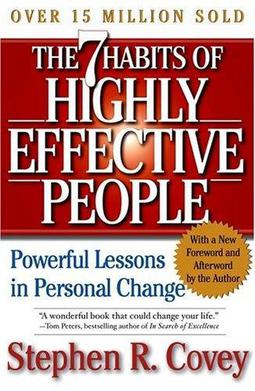I’ve been pondering the idea of win/win situations lately,
and their application in the classroom. In my work, I hear a lot from teachers
frustrated with their GT students who are refusing to perform assignments to
their high ability. This ranges from reading logs to projects to daily
classwork to homework – it’s not getting done, and the teacher is at the end of
her rope with explaining, cajoling, calling parents, giving “working lunches” –
nothing is working.
And I’m beginning to think, “Well, yeah – you’ve created, at
best, a win/lose relationship.” But, how can I spread this message with
diplomacy, without making it seem like an attack on a teacher but an
observation of the situation from somebody who sees both sides?
Covey’s relationships,
from his 7 Habits series:
Win/win – everybody
comes away with the feeling that their opinion has been valued, and their needs
are being met.
Win/lose – one person
comes away with their needs being met; the other person is doing all the
“giving” in the relationship.
Lose/lose – neither
party is satisfied with the outcome of this situation.
To examine these
relationships in a typical classroom setting:
Student X never finishes classroom assignments (let alone
projects or homework!). If he does finish something, he will usually be the
last one done. However, what has been finished shows high mastery of skill.
A lose/lose outcome:
X’s teacher insists on him doing the same work as everybody else, regardless of
mastery shown. It’s only fair – if the rest of the class has to do 15 problems,
then so does X. His folder is full of messages to his parents about incomplete
assignments, and his grades are terrible. He has shut down emotionally in
class, to the point where even the bare minimum is not being met. X’s teacher is
frustrated – she can’t get him to do anything. X is frustrated – school is not
meeting his needs at all, and he’d really rather not be there.
 A win/lose outcome:
X’s teacher insists on him doing the same work as everybody else, regardless of
mastery shown. It’s only fair – if the rest of the class has to do 15 problems,
then so does X. If he doesn’t get it done in class, then he is made to work
during lunch or other “down” time in the day. X complies, and the work is
“completed.” The quality, however, is fairly poor, and does not show his true
capability. The teacher has “won” – her needs are being met (mostly) with his
completed assignments and compliance. X, however, has gained little from this
interaction other than an understanding of “how to play the (school) game.”
A win/lose outcome:
X’s teacher insists on him doing the same work as everybody else, regardless of
mastery shown. It’s only fair – if the rest of the class has to do 15 problems,
then so does X. If he doesn’t get it done in class, then he is made to work
during lunch or other “down” time in the day. X complies, and the work is
“completed.” The quality, however, is fairly poor, and does not show his true
capability. The teacher has “won” – her needs are being met (mostly) with his
completed assignments and compliance. X, however, has gained little from this
interaction other than an understanding of “how to play the (school) game.”
A win/win outcome:
X’s teacher determines her non-negotiables for an assignment. It must be high quality;
it must show mastery of the work. However, she allows room for negotiation.
Instead of completing the entire worksheet, perhaps X can get a “quality
discount.” If, say, he can choose which 6 problems to complete, and completes
them without error, then he doesn’t have to finish the rest of the assignment,
and is graded on what he has done. But
that’s not fair! Everybody else has to complete the assignment! Well,
then why not offer this to everybody in the class? If the majority are showing
mastery of a subject after only completing half of the practice…then perhaps
they are all ready to move on, and insisting on finishing a page for the sake
of finishing it is a waste of the teacher’s time as well as the students’. The
teacher gets what she needs – an assessment of what the student is capable of
doing. And X gets what he needs – some choice over how his time will be used.
It seems, as we get further into the school year and the
stresses of planning, grading, state assessments and the like begin to mount, the
willingness to negotiate with students becomes less and less. What students
need – and GT students need in particular – is some choice and control over
what they do and how they do it. I don’t mean letting a student get away with
not working at all – that is still a win/lose relationship, although the
student in that case is the victor, and the teacher the losing party.
But please, as you plan, identify areas where student choice
can be implemented. If you find yourself in a win/lose or lose/lose
relationship, consider stepping back and talking to your student.
“What is it about this assignment that keeps you from
completing it? This is why I gave you the assignment, and what I need you to
show me through it. How can we rework this so we both feel as if we’re getting
what we need from it?”
With a little bit of flexibility, you may just save yourself
– and your students – a lot of frustration and wasted time.











